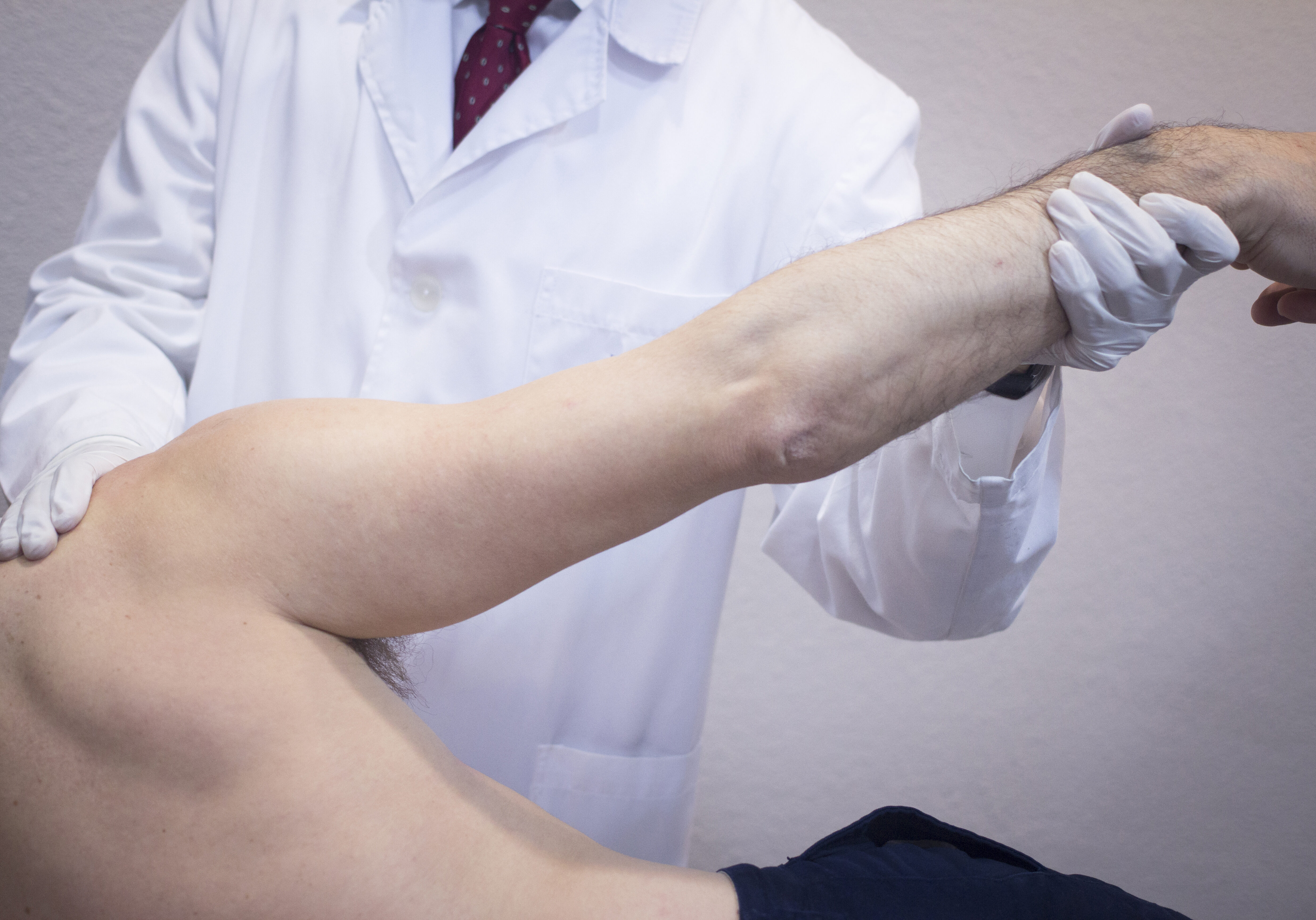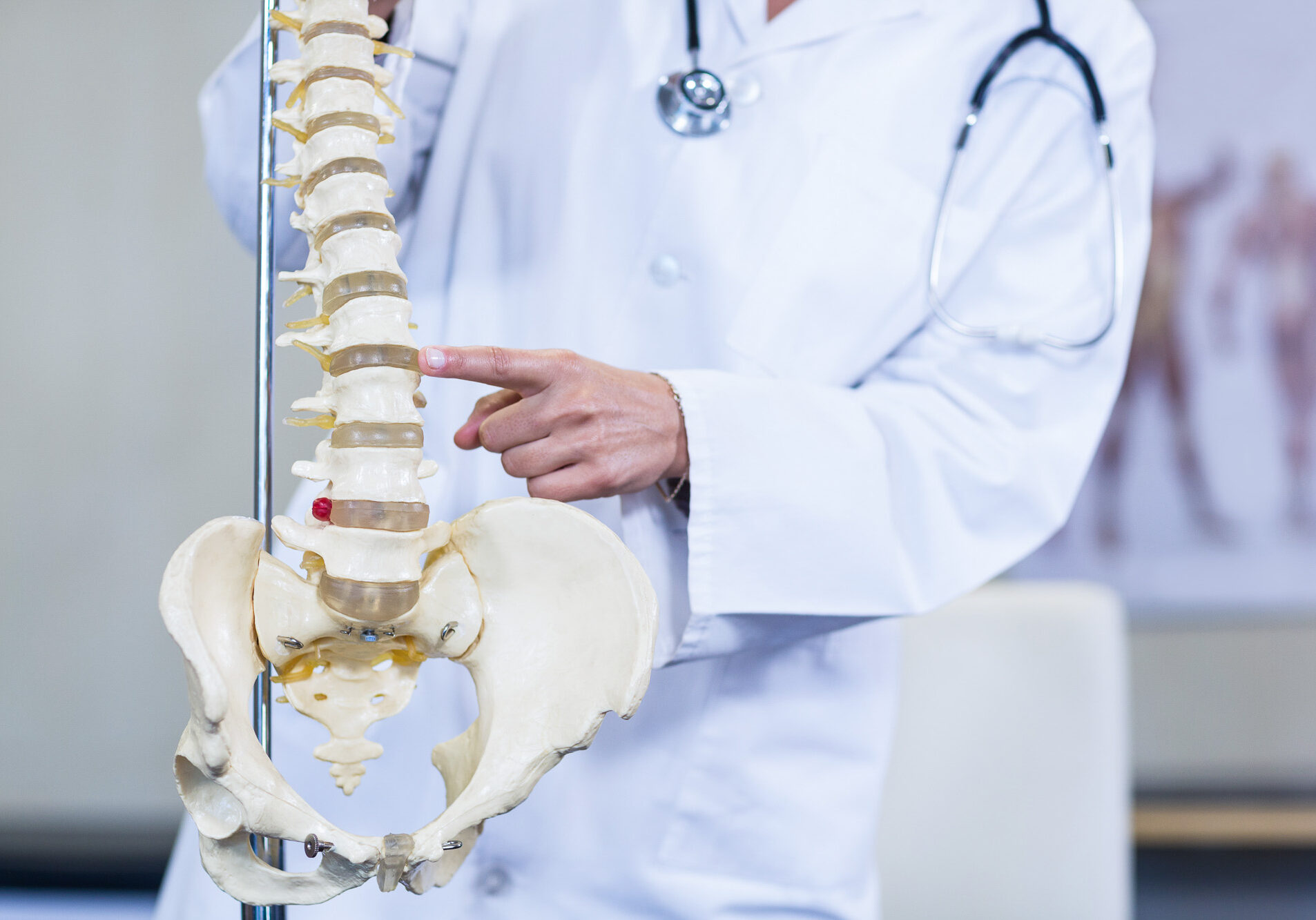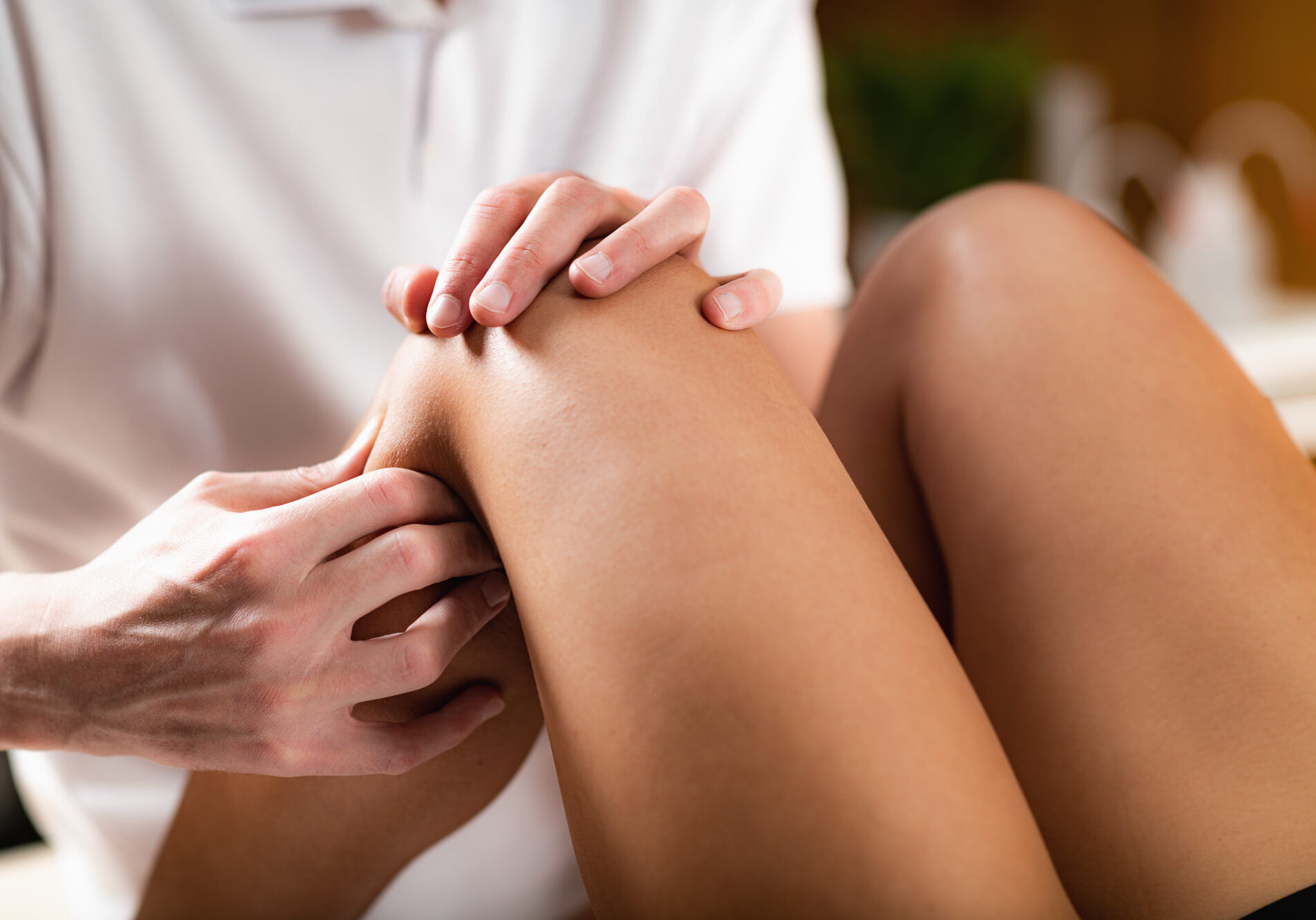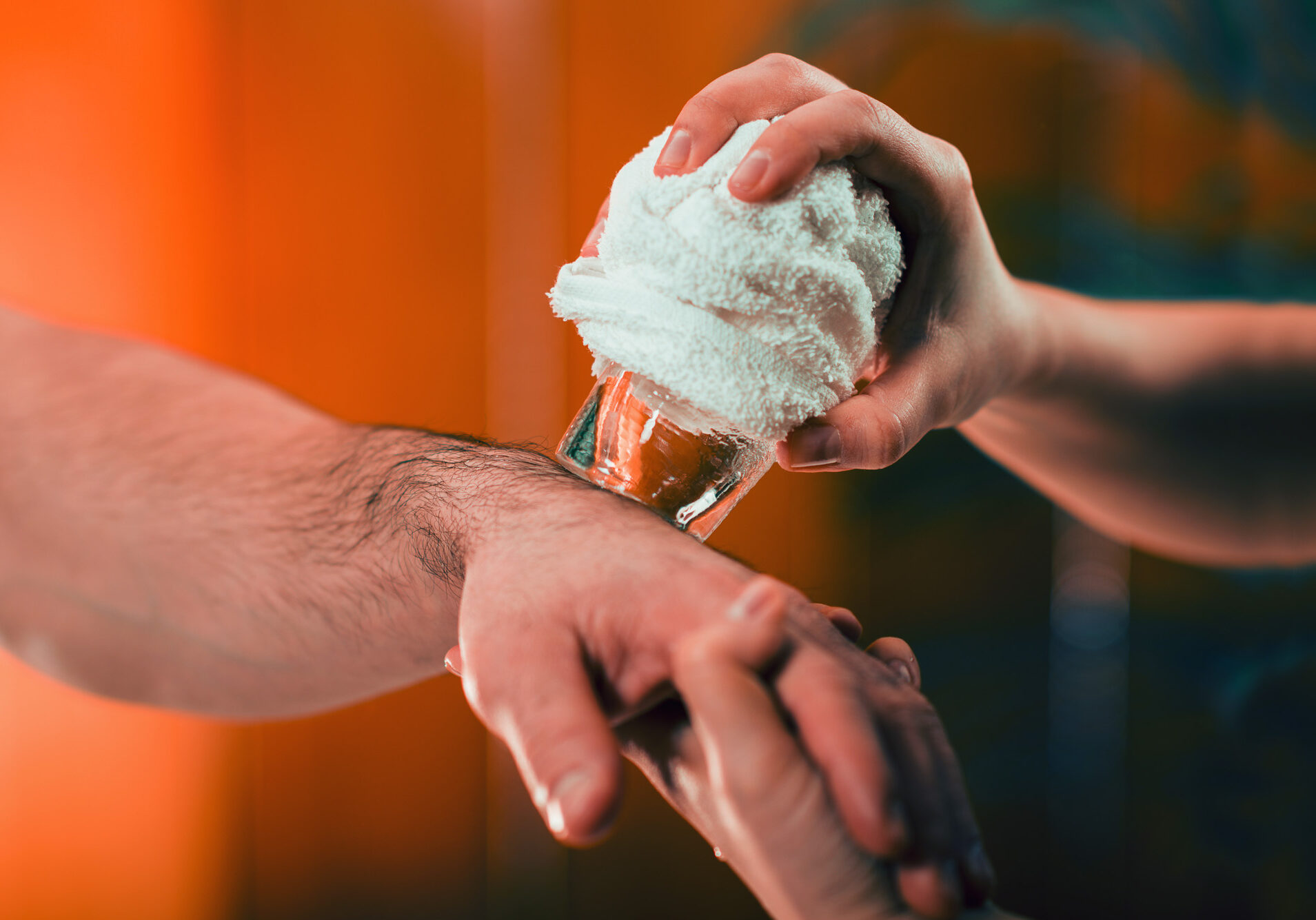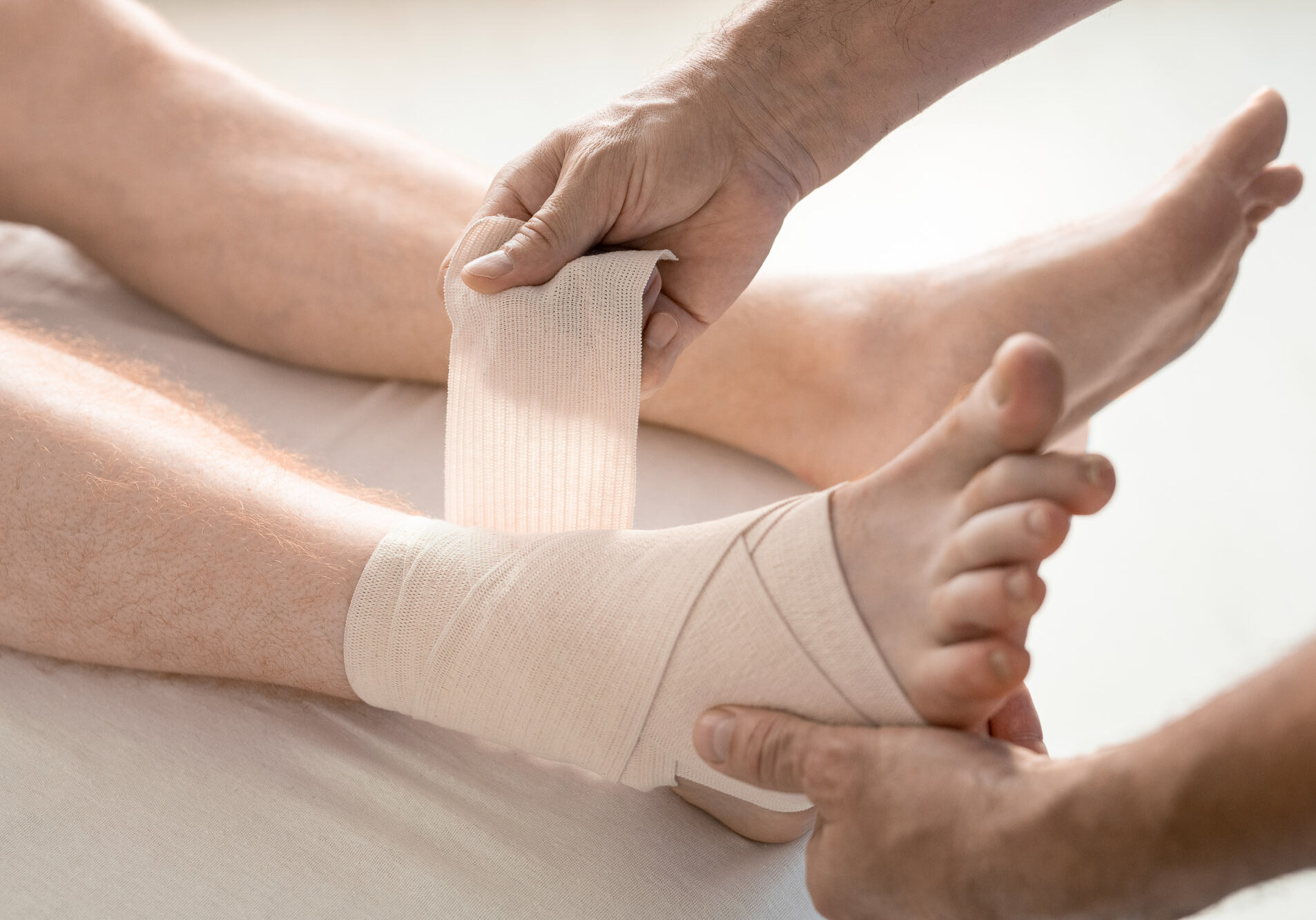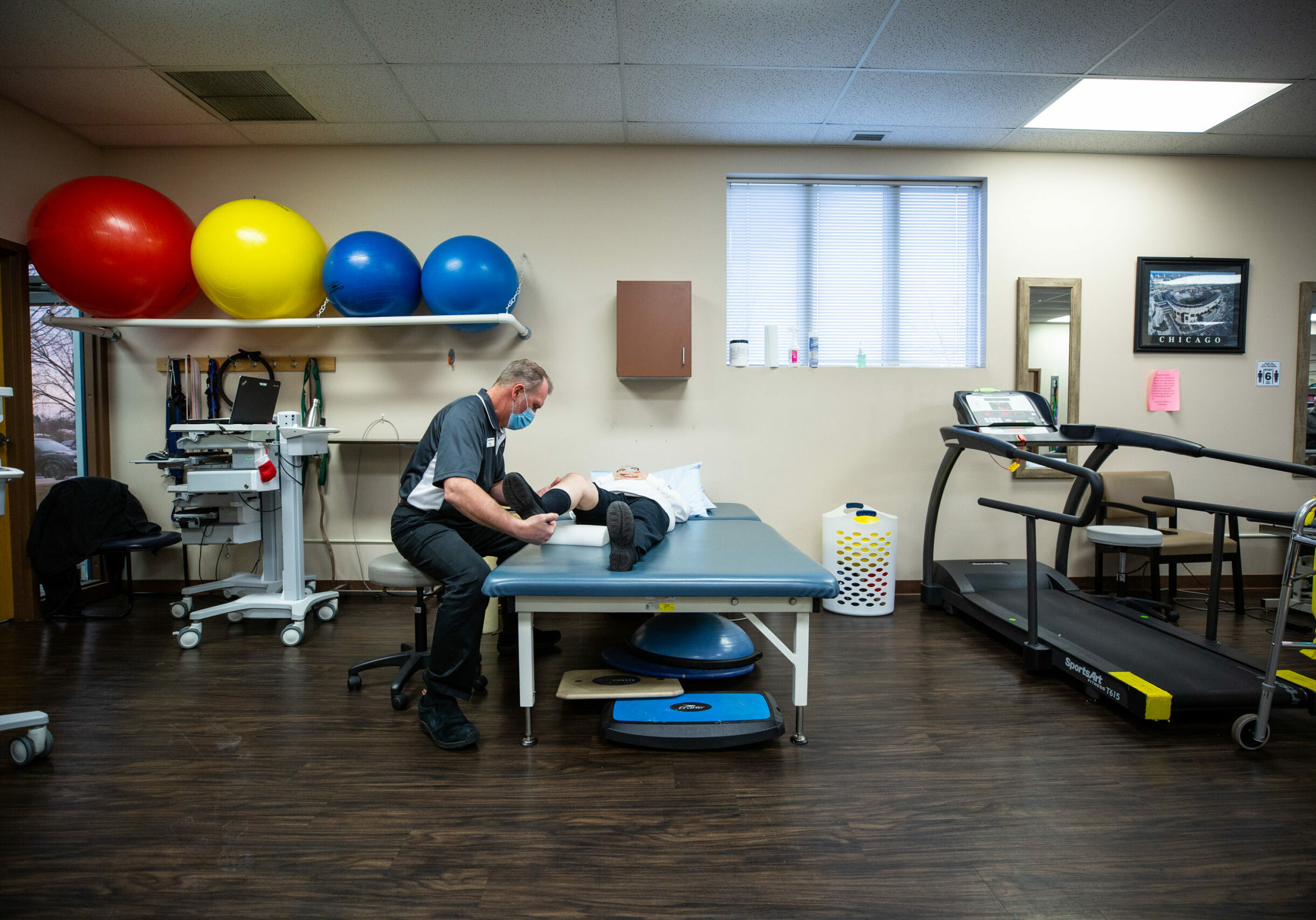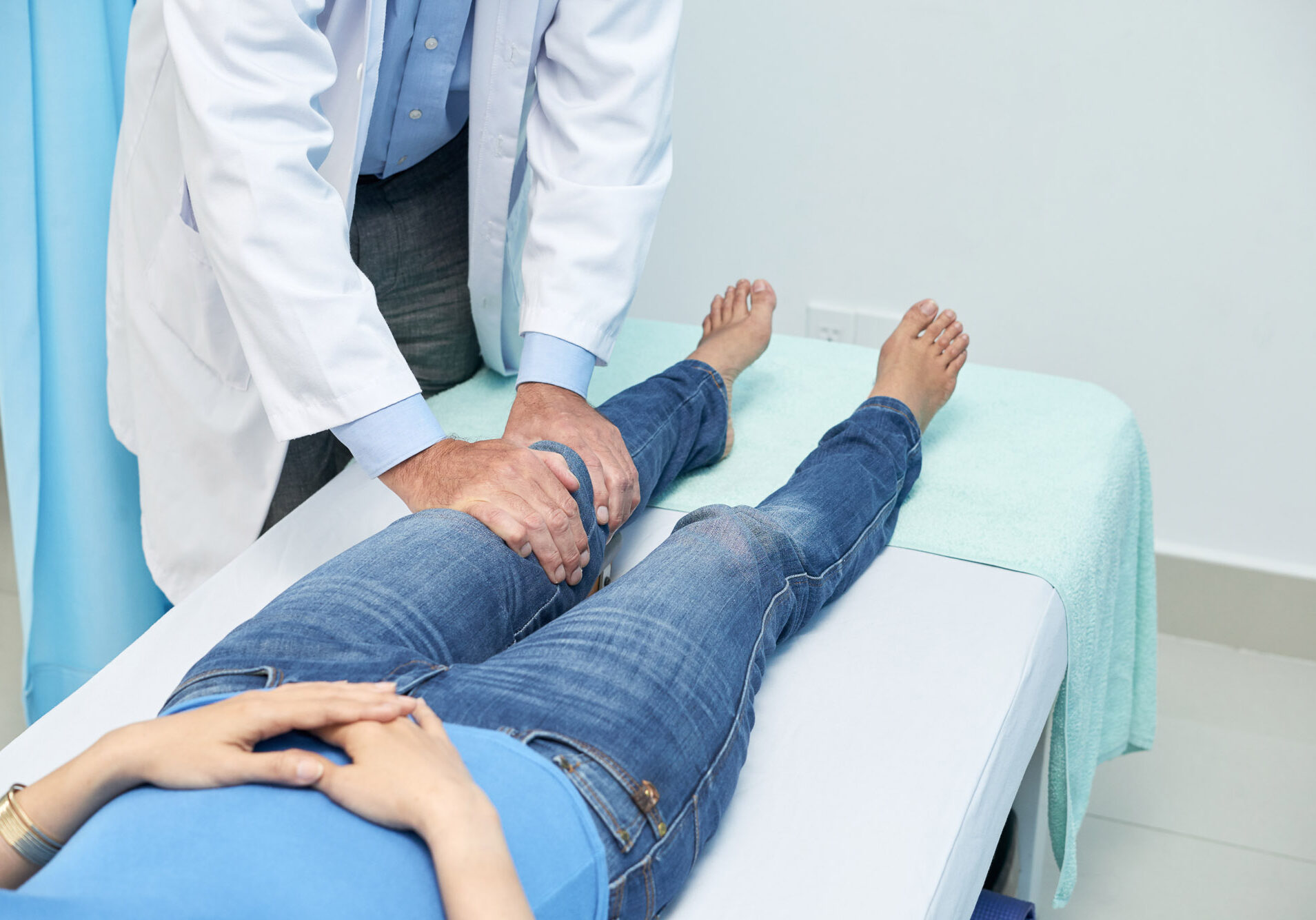General Orthopedics
Arthroscopy is a type of surgery used by orthopedic surgeons. Through the use of tiny instruments, a fiber optic camera and a TV monitor surgeons are able to access and visualize joints in the body. The most commonly performed arthroscopy procedures are performed on the knee and shoulder. Other joints include the hip, spine, elbow, wrist, and ankle. Because of arthroscopy, conditions that were once treated using open surgery can be treated using a minimally invasive approach.
Advantages
Arthroscopic surgery allows surgeons to take small incisions rather than large ones. This decreases recovery time because of the muscles and soft tissues of the joint experience less trauma. It also decreases the amount of pain associated with surgery and minimizes scarring. Athletes have seen tremendous benefits because of arthroscopic surgery. Following injury, they are able to return to competition in a shorter period of time.
Conditions Treated
The following are the most common injuries/conditions that are treated with arthroscopic surgery:
Knee
- Meniscus tears. Tearing of the cartilage that cushions the knee joint.
- ACL tears. Tearing of the ligament that is responsible for knee stability and movement.
- Osteoarthritis (OA). Degeneration of knee bone, cartilage, and soft tissue.
Shoulder
- Rotator cuff tears. Tearing of the tendons that are responsible for rotating and elevating the shoulder.
- Labrum tears. Tearing of the soft tissue that helps hold the shoulder in its socket.
Hip
- Femoroacetabular impingement (FAI). Impingement between the two bones that make up the ball and socket hip joint.
- Labrum tears. Tearing of the soft tissue that helps hold the hip in place.
Spine
- Disc Herniation. Slipping of the shock absorbing discs that lie between adjacent spinal vertebrae.
- Degenerative discs. Discs that have been affected by osteoarthritis.
Wrist
- Carpal tunnel syndrome. Pinching (at the wrist) of the median nerve that supplies the hand and several fingers.
- Osteoarthritis (OA). Degeneration of the wrist bone, cartilage, and soft tissue.
The Future
As physicians and scientists continue to search for new and better ways to perform surgery, it is expected that more arthroscopic surgical solutions will be found.
Osteoarthritis (OA) is a disease characterized by the wear and tear of the bone, cartilage and soft tissue of the joints as people age. Non-osteoarthritic joints have smooth, healthy cartilage over their bones. They are able to move easily and without pain. As osteoarthritis develops, the cartilage becomes damaged and pain occurs with movement. Cartilage that has been completely worn away causes bone-on-bone rubbing, which is classified as severe osteoarthritis. This can be painful, limiting, and in some cases debilitating.
Exercise and Arthritis
Arthritis is a chronic condition. By diagnosing and treating it early, the progression of the disease can be drastically decreased and patients can live pain-free lives. Various treatments can slow the progression of arthritis and improve the quality of life. Often overlooked as a treatment option, exercise is a great way to manage arthritis pain because of the following reasons:
- Exercise improves cartilage health. Blood flow and nutrient delivery to cartilage are increased when patients exercise.
- Exercise strengthens the muscles around the joint. Stronger muscles improve joint function.
- Exercise promotes weight loss. Losing weight decreases the load placed on the joint.
- Exercise improves cardiovascular health. General well-being and health is an important component of managing arthritis pain.
- Exercise improves mood. Anxiety, depression, and sleep patterns improve when patients exercise.
Starting an exercise program can be hard for patients with osteoarthritis, but it is entirely possible.
Starting an Exercise Program
The first step is to ask your Orthopedic specialist for his opinion and recommendations. The type and amount of exercise will depend on the severity of your condition. A physical therapist may be used to help you get started. All exercise plans revolve around increasing range of motion and improving strength and health. Patients who adhere to the advice of their Orthopedic specialist can and will decrease their pain and slow the progression of osteoarthritis.
Osteoarthritis (OA) is a chronic disease characterized by the degeneration of the cartilage that covers bones and allows them to move smoothly and functionally. Osteoarthritis treatment revolves around decreasing pain and inflammation and slowing the progression of the disease. Because there is no cure for osteoarthritis, physicians and patients are continuously searching for new treatment options, including supplements. Glucosamine and chondroitin sulfate is a popular supplement that has been shown to decrease osteoarthritis pain.
In their natural state within the body, glucosamine stimulates cartilage formation and repair and chondroitin sulfate prevents the degradation of cartilage. In their supplement form, they are derived from animal sources, combined, and manufactured. Supplement and health food stores, pharmacies, and supermarkets across the United States sell the supplements made by various manufacturers.
- What the supplements do. Studies have shown that glucosamine and chondroitin sulfate supplements decrease inflammation and help with osteoarthritis-related pain.
- What the supplements do not do. No studies have shown that glucosamine and chondroitin sulfate supplements help grow or repair cartilage.
There are no glucosamine and chondroitin supplements that are approved by the Food and Drug Administration (FDA). Which means that purchasing the supplements may be risky in that consumers might not get what they are paying for.
What Interested Patients Should Do
Glucosamine and chondroitin supplements may not benefit every patient with osteoarthritis. Interested patients should talk to their Orthopedic specialist about supplementation and if its right for them. If it is, an Orthopedic specialist can give valuable information regarding which manufacturer to purchase from, how much to take, expected results, and potential side effects or adverse reactions. They also can recommend other treatment options that can be used in place of—or in conjunction with— glucosamine and chondroitin sulfate supplements.
Knee arthritis is a chronic condition that produces unpleasant symptoms, the most common of which being pain, that can limit patients and decrease their quality of life. In its early stages, knee arthritis can be effectively treated using non-surgical treatment options such as nonsteroidal anti-inflammatory drugs (NSAIDs), activity modification, physical therapy, and weight loss. In the later stages of knee arthritis, the effectiveness of these treatment options may diminish and minimally invasive treatment may become necessary. One commonly used minimally invasive treatment option is viscosupplementation.
Hyaluronic acid
Hyaluronic acid is naturally found in the synovial fluid that lubricates joints and helps them move smoothly. Because it has been shown that patients with osteoarthritis have low levels of hyaluronic acid, it is theorized that supplementation can be an effective way to improve knee joint function and decrease pain.
Administration
Viscosupplement injections are usually given five times over the course of 3-5-weeks. During a quick in-office procedure, an Orthopedic specialist administers hyaluronic acid via injection into the arthritic knee joint. Patients experience minimal discomfort from the needle prick used to deliver the medication. They are allowed to return to day-to-day activities immediately after the procedure. Although rare, side effects, most commonly pain and swelling, may occur.
Outcomes
Results may begin several weeks after the injections. It is important to note that not all patients experience results and patients that do experience them do so for various lengths of time. If injections are effective, they can be repeated six-months after treatment.
Maximum results may be seen when viscosupplementation is combined with any of the non-surgical treatment options mentioned in the introductory paragraph. Because arthritis is a chronic condition, treatment is geared towards reducing symptoms and slowing down the progression of the disease using multiple treatment approaches.
In order to find out if viscosupplementation is something that can help your condition, it is recommended that you contact an Orthopedic specialist.
Like all systems of the body, the musculoskeletal system changes with age. Slowly, muscles lose size and strength, bone density decreases, and connective tissues become less elastic. As a result, the following three conditions may develop or worsen: osteoarthritis, osteoporosis, lower back pain. In order to combat this, an exercise routine can be created and followed.
Exercise and Osteoarthritis
Exercise has been shown to reduce the symptoms of osteoarthritis and slow the progression of the disease. Patients who adhere to a prescribed exercise program can look forward to the following benefits:
- Improved cartilage health
- Bigger, stronger muscles
- Reduced body fat percentage
- Improved cardiovascular health
- Improved mood
All of these can be instrumental when trying to counteract the effects that aging may have on osteoarthritis.
Exercise and Osteoporosis
Osteoporosis is a disease common in the elderly patient population, particularly females. The disease is characterized by a decrease in bone density. As the disease progresses, the risk of fracturing or breaking a bone increases as the bones become weak and brittle. It has been proven that exercise can reduce this risk by slowing the progression of the disease. An exercise program should consist of weight-bearing and strength training exercises. Interested patients should consult an Orthopedic specialist before partaking in an exercise program.
Exercise and Lower Back Pain
Lower back pain is a common condition experienced by nearly everyone at some point in their life. When it becomes chronic, patients may be limited in their day-to-day activities. One of the best ways to reduce lower back pain is by exercising. Stretching the muscles of the back reduces pain and inflammation and increases flexibility and function. Strengthening exercises make the muscles strong, which helps take pressure off the spine during weight bearing/lifting activities. Weight-bearing exercises, like walking and jogging, improve joint function and help with weight loss. Research has shown that patients with lower back pain who exercise experience symptoms less often and severely than patients who are sedentary.
Before Starting
Before starting an exercise program designed to help improve musculoskeletal health, patients are advised to speak with an Orthopedic specialist.
Many patients believe that exercising will make their arthritis pain worse. But this simply is not true. Recent studies have shown that patients who are sedentary experience more severe arthritis pain than patients who exercise frequently. Additionally, patients who do not exercise are at a greater risk to develop total loss of mobility. One of the hardest parts of engaging in a routine exercise program is getting started. Because of this, the first step is to talk with your Orthopedic specialist, as their advice can help steer you in the right direction.
Articular cartilage
Articular cartilage covers the ends of bones. Because it is smooth, it allows bones to move easily without rubbing. Articular cartilage that is damaged due to an injury or arthritis cannot be regrown or replaced. If stem cell therapy were able to solve this problem, it would be a tremendous medical breakthrough.
Tendons and ligaments
Partially torn tendons and ligaments can regrow, but the new tissue may be weaker than the original.
Completely torn tendons and ligaments require surgical intervention to repair. The torn tendon or ligament is replaced with one from the patient (an autograft) or a cadaver (an allograft). The new tendon will heal if it is fixated properly and accepted by the body.
The goal of stem cell therapy is to repair torn ligaments through the injection of stem cells, decreasing the risk of weak tissue growth and the need for an autograft or allograft.
Meniscal cartilage
Meniscal cartilage is a special type of cartilage found on the top of the tibia, or shinbone. It acts as a pillow or shock absorber that reduces the load on the knee joint during weight-bearing activities. Meniscus tears may occur during athletic and physical activities. Meniscus degeneration may occur as osteoarthritis progresses. Stem cell research hopes to find a way to introduce stem cells into a torn or damaged meniscus so it can regrow or heal.
Intervertebral discs
The intervertebral discs of the spine lie between adjacent vertebrae. They act as shock absorbers that take the load off the vertebrae during weight-bearing activities. Osteoarthritis can damage the intervertebral discs and cause them to degenerate. Often times, a degenerative disc will slip or herniate. This condition can be extremely painful, especially when the spinal cord is pinched. If there was a way to reverse the effects of osteoarthritis with stem cells, countless patients could be helped.
There currently are stem cell therapies that may help some Orthopedic patients. Interested patients should contact an Orthopedic specialist.
Two bones come together to form a joint that is held together by ligaments, tendons, and soft tissues. When a joint is inflamed, it is said to be arthritic or suffering from arthritis. The two most common types of arthritis are osteoarthritis and rheumatoid arthritis.
Osteoarthritis (OA)
The wear and tear of a joint that occurs with age, overuse, and/or injury is known as osteoarthritis. Although osteoarthritis can affect any joint, the ones that typically produce symptoms are those that bear the most weight: the knee, hip, and spine. As osteoarthritis progresses, the cartilage that covers bones wears away and the bone is exposed. Osteoarthritis in its most severe form presents as bone-on-bone rubbing that is painful, limiting, and in some cases debilitating.
Rheumatoid Arthritis (RA)
The immune system protects the body from foreign invaders by sending special cells to kill them. Rheumatoid arthritis is a disease in which the immune system mistakes itself as a foreign invader and attacks the joint. Symptoms include pain, swelling, and stiffness. Rheumatoid arthritis can occur in any joint.
Treatment
Arthritis is a chronic condition. Treatment revolves around decreasing symptoms and slowing the progression of the disease. The sooner arthritis is diagnosed and treated the better. Treatment options are geared towards decreasing inflammation and pain. Some of the most common include the following:
- Nonsteroidal anti-inflammatory drugs (NSAIDs)
- Activity modification
- Physical therapy
- Exercise
- Steroid Injections
- Viscosupplementation
- Surgery
Orthopedic specialists and rheumatologists are qualified to treat arthritis. However, surgery to treat arthritis can only be performed by Orthopedic specialists. Common surgeries to treat arthritis are total joint replacements of the knee, hip, shoulder, and elbow. All have been shown to effectively decrease arthritis pain and improve joint function. Many patients have had their lives drastically changed for the better because of total joint replacement surgery.
Seeking Treatment
Arthritis is a manageable disease. As previously mentioned, the sooner it is diagnosed and treated the better. Patients who suffer from joint pain that will not away with rest and over-the-counter medications should contact an Orthopedic specialist. So should patients who have sustained a sports injury or been involved in a traumatic accident.
Gout is a type of inflammatory arthritis characterized by attacks of severe joint pain and swelling. Although it can be found in any joint, gout typically first presents in the big toe. Once gout is diagnosed, it can be effectively treated using medications and lifestyle changes.
Description
Gout occurs when excess uric acid in the bloodstream dissolves and is deposited into the joints as microscopic crystals. The crystals are recognized as foreign invaders and the immune system mounts an attack against them. As immune system cells attack crystals, inflammation occurs within the joint. Sudden and severe pain, swelling, and redness are key signs of a gout attack. Attacks can last 3-10-days. Symptoms will gradually decrease on their own or quickly decrease when properly treated. Gout attacks that go untreated will eventually increase in severity and/or frequency.
Cause
Hyperuricemia occurs when excess production or improper elimination of uric acid increases its blood concentration. Hyperuricemia occurs more often in males than females and in patients who have a family history of the condition. Additional risk factors include the following:
- High blood pressure
- Diabetes
- Kidney disease
- Obesity
- Excess alcohol intake
Medications that affect the kidneys, such as diuretics and immune system suppressors, can also lead to hyperuricemia.
Diagnosis
A medical history, physical exam, and blood test are used to diagnose gout. Because many patients will have normal uric acid blood levels following a gout attack, physicians typically order a blood test between attacks.
Treatment
Gout treatment revolves around decreasing symptom severity and preventing future attacks. Treatment options for acute episodes of gout include the following:
- RICE. Rest, ice, compression, and elevation can be used to manage pain, swelling, and inflammation.
- Nonsteroidal anti-inflammatory drugs (NSAIDs). Over-the-counter and prescription medications that help control inflammation and pain.
- Colchicine. A recently FDA approved medication that decreases inflammation.
- Corticosteroids. Powerful anti-inflammatory medications that can be injected directly into the joint, taken in oral form, or topically applied.
Preventative treatment options include the following:
- Medications that lower uric acid blood levels. A physician can prescribe medications that will best treat hyperuricemia.
- Lifestyle modifications. Increasing exercise, improving diet, staying hydrated, and decreasing alcohol intake helps prevent future attacks.
When gout has progressed to a stage where joint damage is severe, surgical intervention may be required to repair the joint. Joint fusions and joint replacements are the most commonly performed procedures.
Inflammatory arthritis is a type of arthritis caused by an overactive immune system attacking healthy tissues. Like other forms of arthritis, inflammatory arthritis can limit a patient’s ability to function and in severe cases can be debilitating. Inflammatory arthritis of the hip can be problematic because of the hip’s weight bearing responsibilities. The three types of inflammatory arthritis that affect the hip are rheumatoid arthritis, ankylosing spondylitis, and systemic lupus erythematosus.
Causes and Symptoms
The cause of inflammatory arthritis is unknown. Typical symptoms may include the following:
- Pain in the groin, thigh, buttocks, and/or hip joint
- Pain that is worse after resting or sitting
- Stiffness
- Limping
- Decreased range of motion
When symptoms do not go away on their own, an appointment with an Orthopedic specialist should be made.
Diagnosis and Treatment
A medical history, physical examination, x-rays, and possibly a blood test may be used to diagnose inflammatory arthritis of the hip. Once an official diagnosis is made, a treatment plan can be prescribed. The following treatment options are commonly used to treat the condition:
- Nonsteroidal anti-inflammatory drugs (NSAIDs). Over-the-counter and prescription medications used to decrease pain and inflammation. Common NSAIDs include aspirin, ibuprofen, naproxen, and celecoxib.
- Disease-modifying anti-rheumatic drugs (DMARDs). Prescription medications that regulate the immune system and slow the progression of inflammatory arthritis.
- Corticosteroid injections. Strong, fast-acting anti-inflammatory medications are injected directly into the hip.
- Physical therapy. Stretching and strengthening exercises improve hip function and decrease pain.
- Assistive devices. Braces, walkers, and canes can help limit pain experienced while weight bearing.
In its severe form, inflammatory arthritis of the hip may require surgical intervention. The most commonly performed procedures are the following:
- Total hip replacement. Arthritic bone is removed and replaced with plastic and metal components.
- Synovectomy. Removal of the arthritic joint lining.
Following recovery, patients experience less pain and are able to function better.
Treatment Outcomes
Inflammatory arthritis of the hip is a chronic condition. The goal of treatment is to manage symptoms and slow the progression of the disease. Medications, surgical procedures, and the expert advice of an experienced Orthopedic specialist can be used to help patients live pain-free, fully functional lives.
Bones weaken to varying degrees with age. Elderly people—especially those that have osteoporosis—are at an increased risk to fracture or break a bone. An easy, effective way to strengthen the bones is to consistently take in adequate amounts of calcium and vitamin D at as early an age as possible.
Calcium
At a cellular level, bones are constantly broken down and rebuilt, or remodeled. Calcium is a mineral that plays a key role in this process. During the early stages of bone formation (the teenage and young adult years), calcium serves as the building block that allows bones to grow and strengthen. In later stages of bone formation (the years after 50), calcium serves as a maintenance mineral that maintains bone mass, strength, and health. Because calcium is not made by the body, it must be taken in from food and/or supplements. Foods that are high in calcium include the following:
- Yogurt
- Milk
- Cheese
- Dark, leafy greens
- Broccoli
One serving of yogurt and one serving milk contain approximately 42% and 30% of daily calcium needs. Patients wanting to improve their bone health should try to take in yogurt and milk on a daily basis.
Vitamin D
Vitamin D is responsible for absorbing calcium. Without it, calcium can not do its job. Often overlooked when planning a bone-healthy diet, vitamin D is equally important as calcium. The body can get small, but inadequate amounts of vitamin D from food and the sun. For this reason, physicians may recommend vitamin D supplements for some patients. Foods that are high in vitamin D include the following:
- Salmon
- Tuna
- Almonds
- Egg yolks
- Mushrooms
Salmon contains the most vitamin D. Egg yolks should be eaten in moderation as they can elevate cholesterol levels.
Starting a Diet
Patients interested in starting a diet to improve bone health should speak to an Orthopedic specialist before getting started. Their expert opinion and advice help patients get started in the right direction. An Orthopedic specialist’s additional bone health nutrient and lifestyle modification recommendations ensure complete bone health is achieved.
Our Specialties
The team at OSNI covers a wide variety of specialties for orthopedic needs. Take a look at them all below and reach out to our team by visiting our contact page to schedule a visit.

